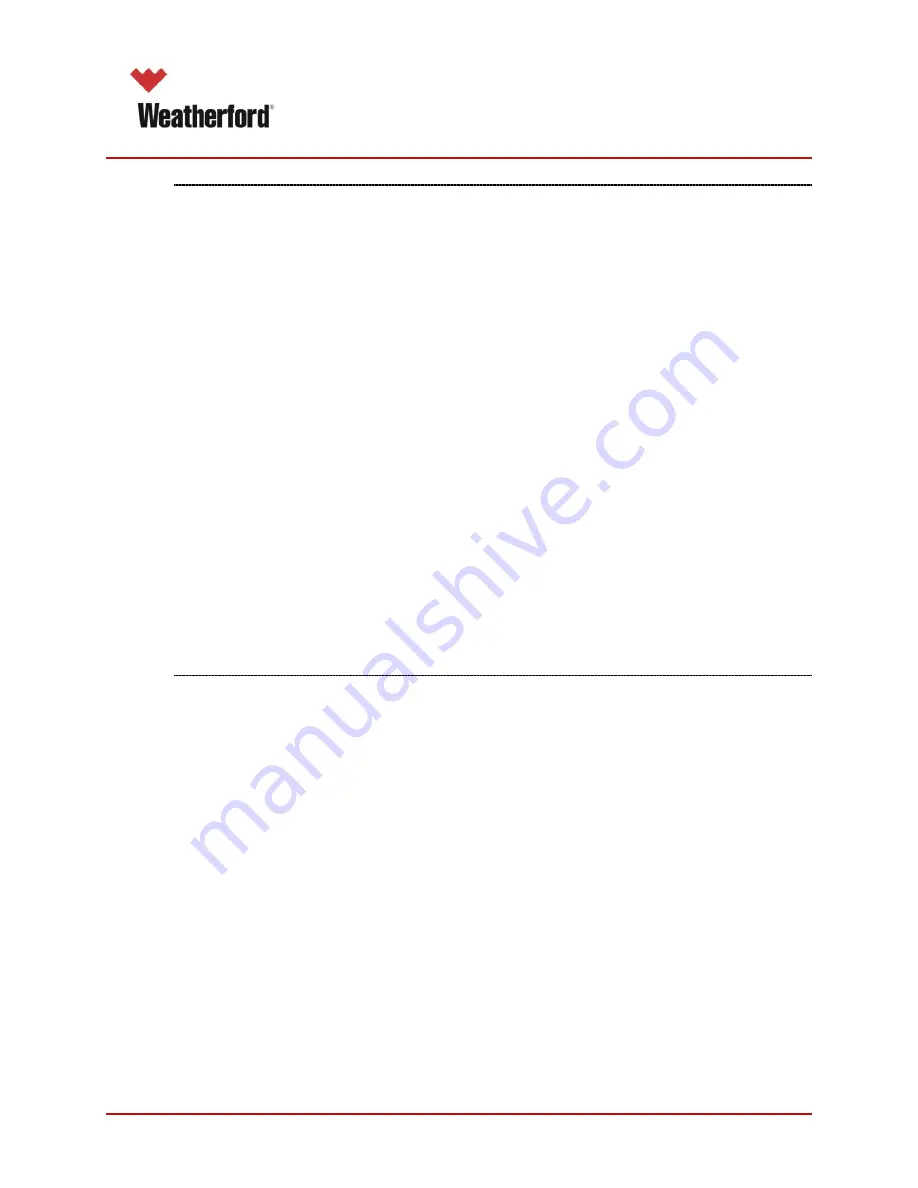
Pump and Fluid Systems
Chapter 2: Storage & Installation
weatherford.com
16
MP-16 2-Piece 5000 psi January 2013
2.2.2
Special Conditions & Procedures
Corrosive Fluids
If the fluids used in the pump are potentially corrosive, it is important to flush the fluid end
with clean water or another non-corrosive cleaner, and then blow dry with compressed air.
This will ensure that the majority of the flushing fluid residue has been removed.
New Pumps
Pumps come from the factory without any crankcase oil and are prepared for short term
storage without any preparation. If users expect to store the unit for longer than this or in a
severe environment, they should use the procedures as indicated below.
Precautions for Freezing Weather
Freezing weather can cause problems for equipment when pumping water-based fluids,
or when water used to flush prior to storage is not properly dried. In environments with
freezing or near-freezing temperatures, it is vital to ensure that a pump is dry prior to storage,
and to thoroughly inspect the pump prior to use.
Severe Environment Precautions
In severe environments, take the following additional steps. The oil in the power end
should be drained and the fill cap removed, and then refilled with 8 quarts of internal rust
inhibitor vapor emitting oil. Replace the fill cap before storing.
In addition, pour 1 quart of internal rust inhibitor into both the suction and discharge ports
of the fluid end, then install pipe plugs in any opening. Coat all exposed, unpainted metal
surfaces with preservative oil, and cover the entire pump with a weather resistant coating,
such as plastic or a canvas tarp.
2.2.3
Upkeep
Once per month, pumps in storage should be inspected and the gears rotated to ensure
that there is no rust or corrosion. During the inspection, the crankshaft should be rotated by
hand at least 4 turns. Then re-coat all surfaces and components with rust-inhibiting oil.
Drain and replace the rust inhibiting oil in the crankcase every six (6) months.
















































